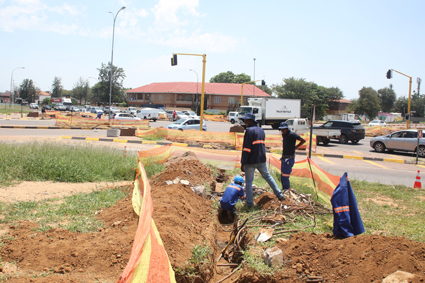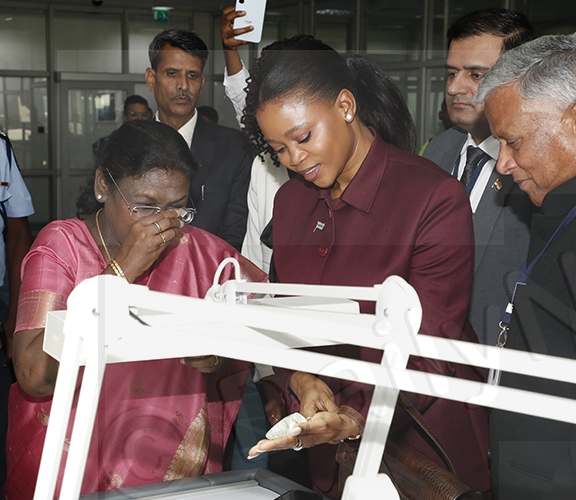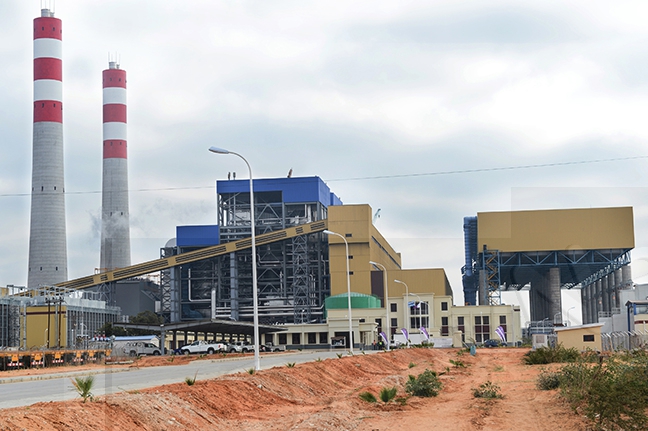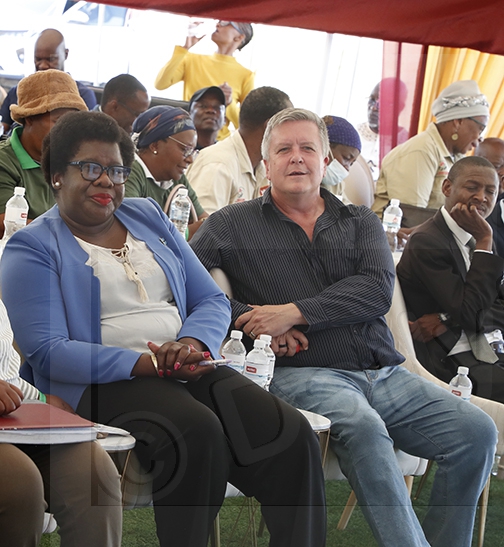Gaborone undergoes facelift
20 Jan 2022
Gaborone is a city under traffic duress, with traffic typically bumper to pumper at peak periods, which are usually morning, midday and evening.
During these peak times, it is normal for the usually authoritative traffic lights to lose their power to the might of trooping traffic cops, trying to minimise the headache for the city’s driving population.
Gaborone drivers and residents alike, would be pleased to hear that the thick, slow moving traffic would soon be history, thanks to the ongoing efforts to revamp the city’s transport infrastructure.
Acknowledging that congestion was undesirable, the Botswana Integrated Transport Project (BITP) project manager, Mr Mmoloki Baele said BITP, a unit of the ministry of transport and communications, was currently busy at work to ease congestion on the capital city’s roads.
“By August, we expect that Gaborone would be different,” Mr Baele said, revealing that they were installing a new traffic signaling system and a centralised traffic control (CTC) centre; upgrading interchanges at Rainbow, Mass Media Complex and Game City interchanges and improving layout of selected intersections in Gaborone.
Initially, he said the projects were expected to have been completed by June 2021, but the time frame was affected by various factors such as COVID-19 lockdowns and movement restrictions and relocation of utility services.
Furthermore, he said lines which were not initially pointed out by the utility service providers were discovered, leading to the contractor having to wait for their removal.
Mr Baele said as at December, progress for the new traffic signal installation was at 83 per cent, with an expected completion date of March this year, while the interchanges work was at 65 per cent and expected to be completed by August this year.
He said the layout improvement was at 57 per cent and should be completed by August, adding that upon completion, the project would ease traffic congestion, improve road safety and the level of road user satisfaction as well as enhance overall ambience of the transport infrastructure.
Mr Baele said the project, which would definitely improve the landscape of the city, was conceived following a 2011 study, which sought to understand the nature of traffic congestion in Gaborone and surroundings.
He said the greater Gaborone multi-modal transport study recommended a number of interventions such as the need to improve road infrastructure and public transport, so as to lure more people to use it.
It has also called for the introduction of controlled parking systems within the city, which would make people think twice about driving to the city centre, as parking would come at a cost.
Furthermore, Mr Baele said the new traffic signal system, which emanated from the study, would play a major role in managing traffic.
He said new equipment would be installed, as well as the use of new technology in traffic signal management, which would be managed from a centralised traffic control centre.
Under the component, Gaborone would transform to LED traffic signal lights, sophisticated traffic control centre and cameras manning traffic, he said.
The cameras would among others detect traffic movement and liaise with the traffic lights whether to open for traffic or shut, he said, adding that there would be incident cameras, which would be able to identify stationary and traffic congestion to alert the control centre.
Mr Baele said the roads would also have CCTV cameras, which would give a clear view of the traffic situation to controllers to enable them to monitor traffic flow.
Another new addition would be the traffic lights and speed violation cameras, which would capture every movement for the control centre to process traffic violation charges.
As for the interchanges upgrade, Mr Baele said Rainbow, Mass Media Complex and Game City interchanges were being upgraded to decongest Western-by pass by separating traffic along the Western-by pass to a raised lane at the interchanges.
Further, he said there were layout improvements along some intersections, which was to allow for more volume traffic.
“In some, we are adding a new lane, but the intention is that the third lane will ultimately be a bus lane that will be only used by public transport,” he said.
The BITP project manager said they were also undertaking a study around the Central Business District, due to its uniqueness, which would ultimately inform management of traffic there.
The ongoing projects are funded by the government of Botswana, with loans from the World Bank and the OPEC Fund for International Development. ENDS
Source : BOPA
Author : Bonang Masolotate
Location : GABORONE
Event : Interview
Date : 20 Jan 2022






